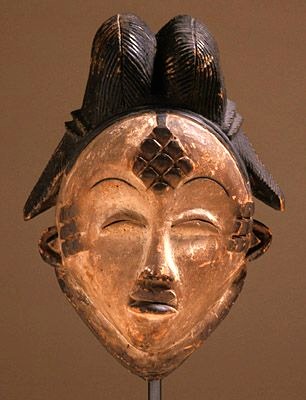Scarification, the representation of an art and an identity in Africa
- Cassandra
- 9 sept. 2021
- 3 min de lecture
Dernière mise à jour : 10 sept. 2021
For centuries, the ethnic scarification visible on the body and face of African tribesmen has been part of their culture. It was a symbol of personality or belonging to a tribe. Thus, it was easier to recognise people from a certain family from the scarification marks on their face or people from a certain region from the marks on their skin. Body transformations, visible within tribal societies in Africa, are part of the practices mystified in the collective imagination and often associated with an archaic practice. Where do these marks come from, what are their meanings ?

Scarification: an ancestral practice
n her photo series project on scarification, photographer Joana Choumali went to meet scarified people. She presented a series of photographs entitled "Hââbré, The Last Generation", to ensure that this tradition is not forgotten. One of them, a Burkinabé, told the photographer: "In times of war, the Mossi and Ko tribes recognised each other, and thus avoided killing each other. I don't need an identity card, I already have my identity on my face.
Different types of scarification can be distinguished in Africa, such as tribal scarification, decorative scarification and ritual or commemorative scarification. There are two main types of scarification: keloids (protruding) in Equatorial Africa and Cameroon and depressed (sunken) in Nigeria, the Middle Congo, West Africa, Senegal and Niger. It addresses three concerns:
Irreversible: It seals the bond between the individual and his tribe
Painful: It provides an opportunity to show courage
Artistic: Makes the individual more desirable
Among the various narratives passed down from generation to generation, one of the most common is that scarification began to take place when the kings of Africa began to invade other tribes in their quest to conquer new territories. They developed their own methods of scarification to mark the family members selected to rule over the captured lands, so that when they returned to the territories and saw the marks, they would know that they already controlled the place. Thus, the practice also spread as a way for family members to reunite with relatives who had moved to other territories. Some of the tribes that have adopted scarification in northern Ghana are the Gonja, Naumba, Dagomba, Frafra and Mamprusi.
Scarification as a rite of passage and a mark of identity
Scarifications are done for religious and social reasons, conveying complex messages about the identity of the individual. They may highlight roles within a group, social status, the tribe to which they belong and the experiences of the individual.
In this case, scars are seen as marks of civilisation, distinguishing humans from animals. In West Africa, many tribes use scarification to mark important moments in the lives of men and women, such as puberty and marriage. The procedure is part of a testing ritual that indicates that the person is capable of advancing in their personal life and in the society in which they find themselves.
Scarification is also art
Scarification also has an esthetic function in that it can symbolise or enhance an individual's beauty, particularly in young women. The ordeal of pain makes young women into exceptional individuals who are collectively admired. The marks are thus appreciated for their beauty, but the individual is also made beautiful because of her courage.
A practice that is dying out
But let's face it, this practice is facing the dictates of modernisation. It is almost disappearing. The future of scarification, like that of many other tribal practices, seems to be gradual disappearance. Many parents now choose not to label their children so that they do not stand out from the crowd and are not discriminated against in the cities, especially when looking for work. The reaction of European colonisers and the action of religious groups, particularly Christian ones, seeking to indoctrinate "barbarians" also led to a negative view of the practice, which was eventually banned in some countries.
But it may survive in some regions with smaller scarifications as a protective measure for children.








Commentaires